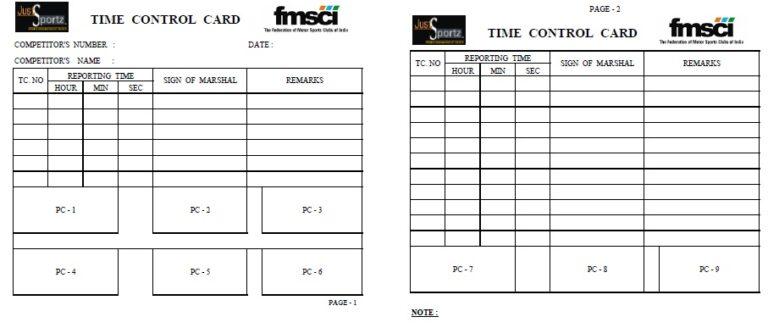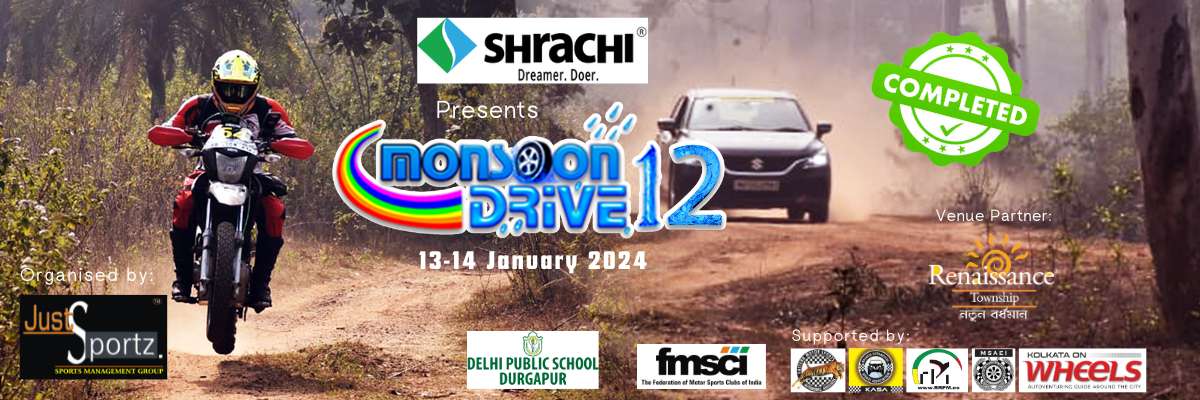
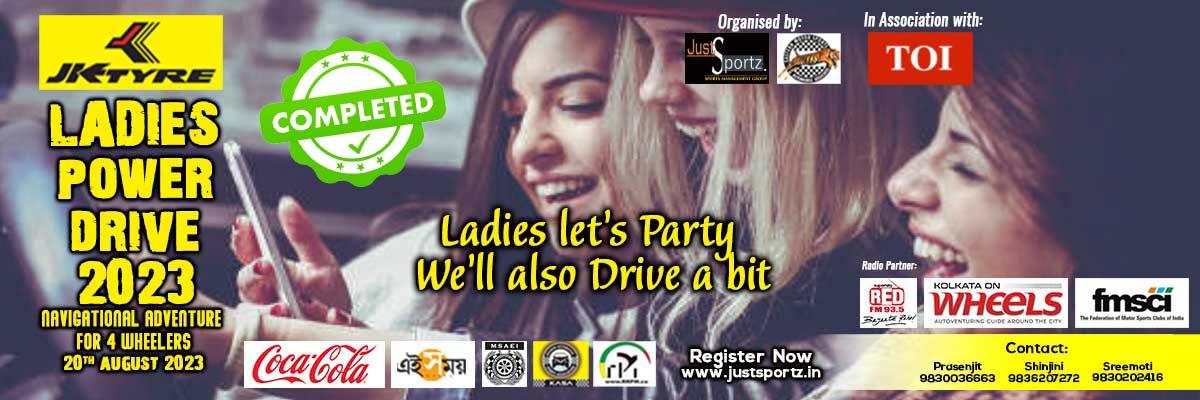
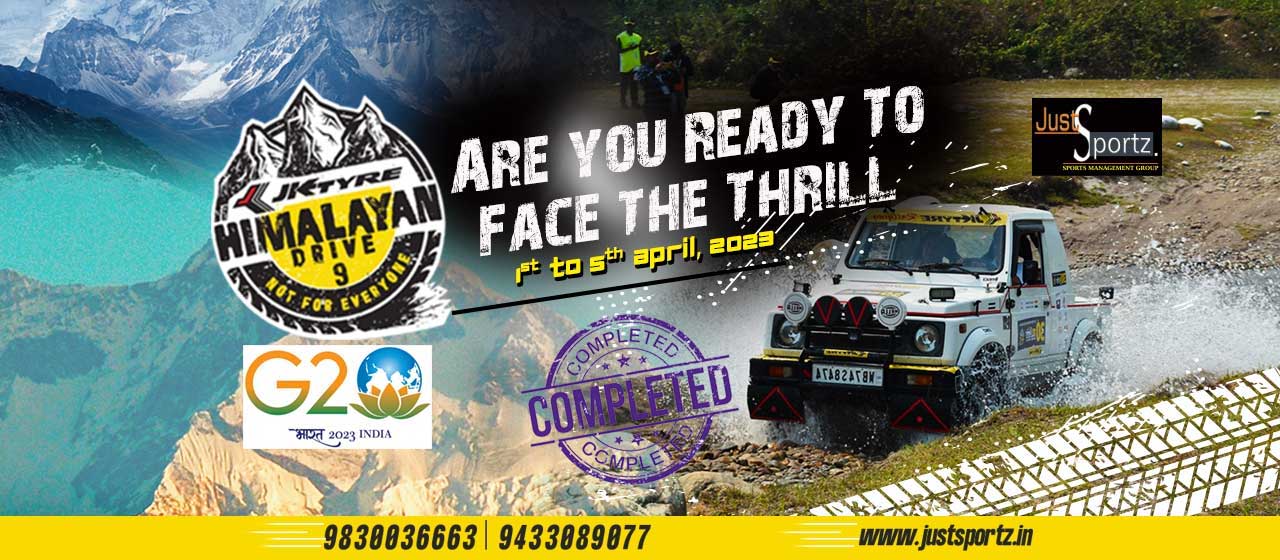
Motor Sports
Time Speed Distance (TSD) Rally
Time Speed Distance [TSD] Rally is a motor sporting event which primarily involves a vehicle, a driver, and a navigator. Some events also allow passengers to sit in the vehicle. TSD Rally is driving under prescribed speed and through prescribed routes at specified speed only.
At the start of the Rally the Navigator is handed over a ROAD BOOK (TULIP) alongwith a SPEED CHART. The Tulip shows the direction and the speed chart has the average speed at which the competitor needs to travel from one specific distance to another. The navigator needs to instruct the Driver to follow the route as given in the Tulip. Routes are always given in KM (Kilometre) format with two decimal digits as shown in the sample Tulip.
Disclosed Time Control [GREEN Board] :–
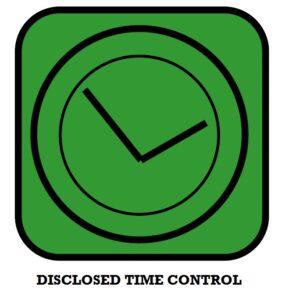
Disclosed Time Controls (DTC) are controls placed by the Organisers somewhere in the route, but will be disclosed in the Road Book [Tulip]. A Board with a GREEN Clock will be placed on the left-hand side of the road to indicate the control. At these Disclosed Time Controls each Competitor will stop and present the Time Control Card (TCC) to the Marshal [Officials] for endorsing the time of arrival along with his / her signature. Any one of the competitor needs to counter sign on the Marshal Card wherein the same time is noted. Time in the Time Control Card of the competitors is noted in HH:MM:SS format. Control board pole shall be the point of reference of control line.
Secret Time Control [ RED Board ]:–
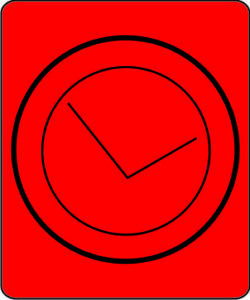
Secret Time Controls (STC) are controls strategically placed by the Organisers somewhere in the route, but undisclosed to the competitors. A Board with a RED Clock will be placed on the left-hand side of the road to indicate the control. At these Disclosed Time Controls each Competitor will stop and present the Time Control Card (TCC) to the Marshal [Officials] for endorsing the time of arrival along with his / her signature. Any one of the competitor needs to counter sign on the Marshal Card wherein the same time is noted. Time in the Time Control Card of the competitors is noted in HH:MM:SS format. Control board pole shall be the point of reference of control line.
Self Time Control [ YELLOW Board ]:–
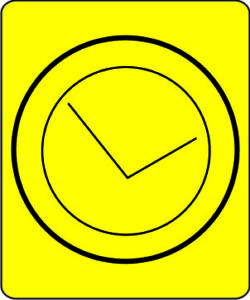
Self Time Controls (SFTC) are controls strategically placed by the Organisers somewhere in the route, but undisclosed to the competitors. Competitors need not stop at these Self Time Controls (SFTC). Competitor’s need to ascertain the Official Distance of the said SFTC and they themselves need to note down his / her time of arrival as per the Speed chart in the first available blank column of the Time Control Card (TCC) of the competitors in HH:MM:SS format. Control board pole shall be the point of reference of control line. Failing to note the time on Time Control Card (TCC) will be treated as missing the control.
Passage Control [BLUE Board] :–
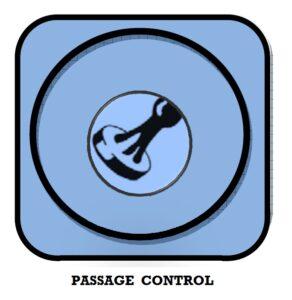
Passage Controls (PC) are controls strategically placed by the Organisers somewhere in the route and it could be either disclosed and mentioned in the ROAD Book or undisclosed to the competitors. A Board with a BLUE Stamp will be placed on the left-hand side of the road to indicate the control. At these Passage Controls each Competitor will stop and present the Time Control Card (TCC) to the Marshal [Officials] for confirming their presence by putting his / her signature. Any one of the competitor needs to counter sign on the Marshal Card. Time is NOT NOTED AT PASSAGE CONTROLS.
Reaching at these controls at Ideal Time is the sole objective of the Competitors. Reaching One Second advance fetches more penalties than reaching One Second late. These timings are used to calculate penalties incurred by the Competing vehicles. The vehicle with the lowest penalty wins the event. In TSD rallying, skills of both the Driver and the Navigator are tested.
Sample of Time Control Card (TCC) :
SAMPLE TULIP
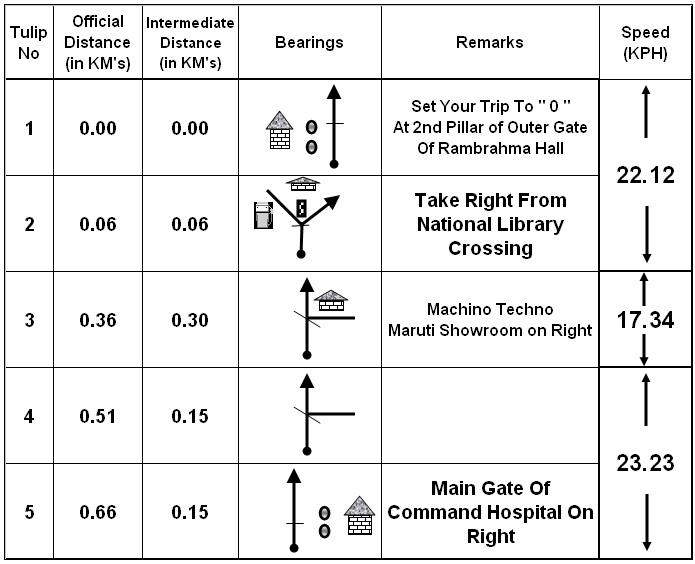
# 0.00 km. – START POINT – GO STRAIGHT
# 0.06 km – TAKE RIGHT FROM ‘Y ‘ FORK
# 0.36 km – GO STRAIGHT ROAD CONNECTS FROM RIGHT
The Driver / Navigator checks the ODOMETER and follows instruction of the navigator. The Navigator will also call out the average speed that needs to be maintained by the vehicle and it becomes the responsibility of the Driver to adhere to such speed. If the Driver fails to adhere to such speeds they may suddenly find a STC (SECRET TIME CONTROL) visible in the route as STC’s are undisclosed to the competitors. The STC Marshall will note down the Hitting time of the car on his own sheet and get the signature of one member of the Crew- i.e. any member of the competing vehicle has to sign and the TC MARSHALL will also write down the HITTING TIME in the Time Control Card (TCC) to be kept and carried by the competitor. (TCC will be provided at the start of the Rally by the Organiser).
- If the Driver do not follow the average speed as called out by the navigator, then they might hit a STC either late or early and earn penalty accordingly.
- From the start of the event till the end of the route there might be numerous Time Controls and all the Hitting Time will be recorded in the TCC
- Usually, penalties of hitting early are more than hitting late. The vehicle with the least penalties is adjudged WINNER.
Needless to mention that, vehicles not following the correct route earns more penalties.
A vehicle may stop anywhere in the route but NOT at the sight of a STC / DTC Marshal. This means that as soon as you get to see a STC / DTC you cannot STOP at all. Your car’s wheels must be moving. If the Marshall watches your car STOPPING or ZIGZAGGING OR REVERSING then you are earn Penalties.
After you hit a Time Control your hitting time is recorded in the TCC. One needs to ascertain the OD (Official Distance) of the Time Control by estimation or from the odometer (OD is not disclosed by the Marshall). Remember to start calculating for the next sector (Here sector means one Time Control to another Time Control) from YOUR ACTUAL HITTING TIME of the last TC.
Calculation Tips for Navigation :
TIME = DISTANCE / SPEED
Example :
To ascertain time to travel 9 km at an average speed of 27
Time = 9 / 27
= 0.333333333 ® 0 Hrs.
= 0.333333333 x 60
=19.99999998 ® 19 Min.
= 0.99999998 x 60
=59.99999988 ® 59 Sec.
Therefore, to travel 9 km at an average speed of 27 time required will be 00:19:59.
Requirement for participation :
Any person over 18 years and with a valid Driving License can participate in Rallying. He / She has to have a navigator who will guide him / her through the event. Certain documents and certain other guidelines as laid down by the governing bodies needs to be followed by each competing vehicle.
Primary documents required :
- Entry Form
- Vehicle Registration Book.
- Tax Book (Tax token)
- Insurance Documents (Special Rally cover insurance)
- Driving License.
- Authority letter from owner of the vehicle if First Driver is not the
Owner of the competing vehicle.
- Pollution Under
- Control Certificate (PUC)
- FMSCI License
- Blood Group Certificate
- Photographs – Minimum 3 copies each
For further details one should refer to General Prescription of 4W Rally laid down by FMSCI in their website –
http://www.fmsci.co.in/4w-rally-general-prescriptions-2021/
FMSCI – website – http://www.fmsci.co.in/
Motocross
Motocross is a form of motorcycle racing held on enclosed off road circuits. The sport evolved from motorcycle trials competitions held in the United Kingdom. Motocross is a physically demanding sport held in all weather conditions. Modern motocross involves a multitude of styles, and types of racing, exhibitions and vehicles. The rugged terrain used for matches is what influences the design of the bikes and distinguishes them from other types of motorcycles. Motocross is usually held on man-made tracks, at large arenas or football stadiums or race tracks made from dirt and pavement.
Gymkhana
This kind of events are usually held at closed courses such as parking lots, small circuits, big ground, stadium or other paved lots. The layout of the course is designed by the organizer and is different for each event.
Due to the tight course layout of gymkhana, smaller / lighter vehicles often have an advantage over larger ones. However, courses may include long straight ways in addition to tight turns, so various sizes and styles of machine are potential contenders.
Motorcycle gymkhana requires technique, ability, knowledge, and motorbike experience. This means riders must not only know techniques of acceleration, braking, reversing but also know tuning the machine to maximize performance. In addition, an analytical mind to assess the course for the most efficient racing lines is essential.
Drag racing
Drag racing is a competition in which prepared automobiles or motorcycles compete two at a time to be the first to cross a set finish line. From a standing START, in a straight line, over a measured distance, most commonly a ¼-mile (402.3-metre / 1,320 ft) on a straight track.
Each driver lines up at the starting line up. Usually Races are started electronically with separate lights for each driver / lane.
Below the staging lights are three large amber lights, a green light, and a red light. When both drivers are staged, the tree is activated to start the race, which causes the three large amber lights to illuminate, followed by the green light. There are two standard light sequences: either the three amber lights flash simultaneously, followed 0.4 seconds later by the green light (a Pro tree), or the ambers light in sequence from top to bottom, 0.5 seconds apart, followed 0.5 seconds later by the green light (a Sportsman tree, or full tree). If the front tires leaves from a stage beam (stage and pre-stage lights both turned off) before the green light illuminates, the red light for that driver’s lane illuminates instead, indicating disqualification (unless a more serious violation occurs). Once a driver commits a red-light foul (also known as red lighting), the other driver can also commit a foul start by leaving the line too early but still win, having left later. Should both drivers leave after the green light illuminates, the one leaving first is said to have a holeshot advantage.
The winner is the first vehicle to cross the finish line (and therefore the driver with the lowest total reaction time and elapsed time).
Several measurements are taken for each race: reaction time, elapsed time, and speed. Reaction time is the period from the green light illuminating to the vehicle leaving the starting line. Elapsed time is the period from the vehicle leaving the starting line to crossing the finish line. Speed is measured through a speed trap covering the final 66 feet (20 m) to the finish line, indicating the approximate maximum speed of the vehicle during the run.
In the standard racing format, the losing car and driver are removed from the contest, while the winner goes on to race other winners, until only one is left.


